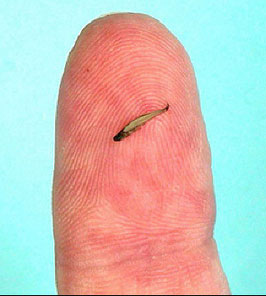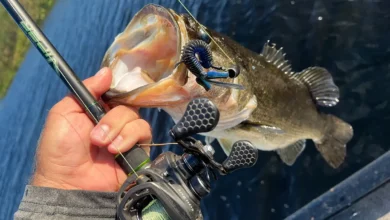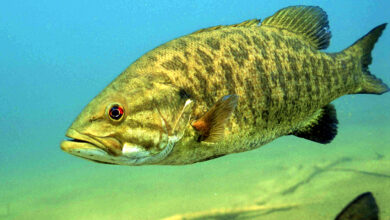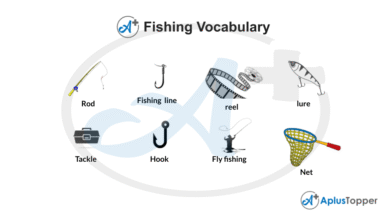What Is the Smallest Fish Ever Caught? A Journey Into the Tiny Wonders of the Ocean

Have you ever wondered how small a fish can really be? We often imagine fish in terms of what we see at a market, in an aquarium, or even on our dinner plate. But the aquatic world holds surprises that can leave anyone speechless. When we think of fishing, the mind usually jumps to big catches—giant tuna, hefty bass, or massive catfish that could feed a whole family. Yet, the smallest fish ever caught is just as fascinating as those giants of the sea. In fact, their size is so tiny that many people can hardly believe they exist. So, what is the smallest fish ever caught, and why does it matter? Let’s dive into this unique story and explore everything about these miniature marvels.
The Fascination with Small Catches
Fishing stories often revolve around size. Usually, bigger means better. Anglers love to brag about a “monster catch” that took hours to reel in. But the other side of fishing—discovering the smallest fish—captures an entirely different type of wonder.
Tiny fish reveal the diversity of aquatic life. They show us how ecosystems support creatures of all shapes and sizes. Unlike large predators, small fish often depend on stealth, speed, and numbers to survive. When scientists and fishermen report a catch so small it can sit on a fingertip, people naturally get curious. These tiny species remind us that not every impressive story needs a giant headline. Sometimes, the smallest catch can hold the biggest surprise.
What Exactly Counts as the Smallest Fish Ever Caught?
The term “smallest fish ever caught” can be tricky. Do we measure it by weight? By length? By the fact that someone hooked it with a line? Or by scientific documentation?
From a scientific standpoint, the title usually goes to fish measured under one inch long. Among them, certain species in Southeast Asia and the Pacific take the crown. One famous example is Paedocypris progenetica, discovered in Indonesia, which measures less than 8 millimeters long as an adult female. Imagine catching something no longer than a grain of rice!
But when it comes to angler stories, people often refer to young fry or tiny minnows accidentally caught while fishing for something larger. The challenge is proving the catch, because many of these fish are too small to hook with traditional gear. That’s why most records of the smallest fish ever caught come from scientists using specialized nets rather than recreational fishermen using rods.
Meet the Contenders for the Smallest Fish Title
When talking about the tiniest fish, a few names always surface. Each of these species has stunned scientists with their miniature size:
1. Paedocypris progenetica
This species, native to swamps in Sumatra, Indonesia, is often considered the world’s smallest fish. Adult females average around 7.9 millimeters. To put it into perspective, that’s shorter than a pencil’s eraser. This fish is transparent, making it difficult to spot even in the clearest waters.
2. Stout Floater (Schindleria brevipinguis)
Found in the Great Barrier Reef, this species reaches about 8 millimeters in length. Despite its small size, it plays an important role in reef ecosystems.
3. Photocorynus spiniceps (a type of anglerfish)
Here’s a bizarre twist. The males of this species are incredibly small compared to the females. Some males measure less than 7 millimeters, making them contenders for the title of smallest vertebrate. They attach themselves to females and rely on them for survival.
4. Dwarf Goby
The Philippines is home to the dwarf goby, another miniature species that barely grows beyond a centimeter. These fish live among coral reefs and hide easily in tiny crevices.
Why Catching Small Fish Matters in Science
You might ask, why would anyone care about catching such small fish? After all, you can’t eat them, and they don’t make exciting trophies. But their significance is huge in scientific research.
Small fish help scientists understand how life adapts in extreme environments. For example, many of these tiny species thrive in acidic swamps or in coral reefs where survival depends on squeezing into small spaces. Their size shows how evolution shapes creatures to fit very specific roles in ecosystems.
Moreover, the discovery of the smallest fish ever caught challenges our understanding of vertebrate biology. How small can a backbone-bearing animal be and still survive? These discoveries provide clues about the limits of animal life.
Fishing for Tiny Treasures: How Are They Caught?
Catching the smallest fish is no easy task. Unlike big catches, you can’t simply toss a hook and wait. Scientists use special fine-mesh nets, water traps, and even suction devices to collect these miniature creatures.
Once caught, the fish are often measured under microscopes. In many cases, they are preserved for study rather than released, since handling such delicate animals is almost impossible without harming them.
For recreational anglers, the “smallest catch” often refers to young versions of larger fish, like juvenile perch or sunfish. These are accidentally hooked while fishing for adults. But in the world of records, scientists usually claim the crown for smallest fish caught.
The Role of Small Fish in the Food Chain
Even though they are tiny, these fish have big jobs. They often serve as food for slightly larger fish, amphibians, and aquatic insects. Without them, many ecosystems would collapse.
For example, the smallest reef fish feed on plankton, which makes them a vital link in transferring energy up the food chain. Their presence ensures that larger species, including commercially important fish, have enough food to survive.
Comparing Giants and Minis: A Fun Perspective
It’s always fun to compare extremes. On one side, we have the whale shark—the largest fish, growing up to 40 feet long. On the other side, species like Paedocypris barely stretch past 7 millimeters. The contrast is almost unbelievable.
Imagine a fishing competition where one person reels in a 500-pound marlin, and another shows up with a fish smaller than a fingernail. Both catches tell stories about the richness of the ocean, but in completely different ways.
Stories from Anglers: Accidental Tiny Catches
While scientists hold most of the official records, fishermen also share funny stories about catching fish so small they didn’t even notice at first. Some recall reeling in bait only to discover a fish no larger than the hook itself had tried to bite.
These moments often turn into jokes among fishing buddies, but they also highlight how resilient life in water can be. Even the tiniest fry are eager enough to chase bait much bigger than themselves.
Environmental Lessons from the Smallest Fish
The discovery and capture of the smallest fish also serve as reminders of how fragile aquatic environments are. Many of these species live in specific, delicate habitats like peat swamps or coral reefs. Pollution, deforestation, and climate change put them at great risk.
By studying these miniature fish, scientists can track changes in ecosystems. A sudden decline in tiny species often signals bigger problems ahead. Protecting them is not just about saving small creatures—it’s about ensuring the balance of entire ecosystems.
Why People Love Learning About the Smallest Fish
People naturally enjoy extremes. Just like stories about the tallest person or the fastest runner capture attention, tales of the smallest fish spark curiosity. They’re fun to imagine, hard to believe, and make us appreciate the diversity of nature.
Kids especially love hearing about these record-breaking animals. For them, it feels magical that something alive can be smaller than their fingernail. For adults, it’s a reminder of how much is still left to explore in the natural world.
The Ongoing Search for Even Smaller Species
The ocean remains largely unexplored, and scientists believe there may be even smaller fish waiting to be discovered. Every year, researchers uncover new species that challenge our assumptions about size, survival, and adaptation.
Who knows? The current titleholder for smallest fish ever caught might soon be replaced by another discovery. This uncertainty keeps the field exciting and motivates further exploration.
Final Thoughts: Big Lessons from the Smallest Catch
So, what have we learned from the story of the smallest fish ever caught? We discovered that size isn’t the only measure of importance. These tiny species may not fill a dinner plate, but they fill vital roles in ecosystems. They inspire curiosity, spark scientific discoveries, and remind us of nature’s endless creativity.
The smallest fish ever caught proves that wonder comes in all sizes. Whether you’re holding a massive catch or marveling at a fish smaller than a grain of rice, each story reveals the beauty and mystery of aquatic life. Next time you hear about fishing records, don’t just think about the biggest catch—remember that sometimes, the tiniest ones are even more extraordinary. smallest fish ever caught



